中国组织工程研究 ›› 2023, Vol. 27 ›› Issue (15): 2339-2343.doi: 10.12307/2023.621
• 干细胞基础实验 basic experiments of stem cells • 上一篇 下一篇
SD乳鼠原代皮质神经元及星形胶质细胞同时培养的实验方法
明 江1,廖益东1,宋文学1,穆德勇1,刘宗伟1,徐卡娅2
- 1贵州医科大学,贵州省贵安新区 550025;2贵州医科大学附属医院神经外科,贵州省贵阳市 550004
Experimental method of simultaneous culture of primary cortical neurons and astrocytes of Sprague-Dawley suckling rats
Ming Jiang1, Liao Yidong1, Song Wenxue1, Mu Deyong1, Liu Zongwei1, Xu Kaya2
- 1Guizhou Medical University, Guiyang 550025, Guizhou Province, China; 2Department of Neurosurgery, Affiliated Hospital of Guizhou Medical University, Guiyang 550004, Guizhou Province, China
摘要:

文题释义:
原代皮质神经元:是神经系统的重要结构和功能单位,在神经生物学中扮演着重要的角色。此类细胞取材容易,可直接从新鲜SD乳鼠脑组织中提取,而且其特性接近于体内神经元特性,可作为细胞模型用于研究神经系统相关疾病,如缺血性脑卒中、糖尿病性脑病、神经退行性变化等。
星形胶质细胞:作为神经系统中最丰富的细胞类型,执行着重要的稳态功能。病理状态下星形胶质细胞的活化,几乎参与所有形式的神经损伤和神经性疾病。因此获取稳定的星形胶质细胞模型,对于研究星形胶质细胞引发的相关疾病具有重要意义。
背景:目前获取原代皮质神经元和星形胶质细胞的方法很多,传统方法通常是分别获取这两种细胞,但实验方法过于繁琐且浪费实验材料。找到一种简单、经济、可行并同时提取这两种细胞的培养方法尤为重要。
目的:观察同时提取培养SD乳鼠大脑皮质神经元及星形胶质细胞的效果及注意事项。
方法:选用出生24 h内的SD乳鼠,用体积分数为75%乙醇浸泡消毒,待乳鼠昏迷后断脊处死,沿乳鼠颈部用剪刀离断头颅并放入装有高糖DMEM的小烧杯中,沿矢状缝打开头颅并取出大脑放入盛有高糖DMEM的培养皿中。在冰上剥出脑膜及血管,夹取皮质表面2.0-3.0 mm的脑组织,通过木瓜酶和DNA酶进行消化20 min,用含有体积分数为10%胎牛血清的DMEM/F12终止消化。以细胞浓度为1.0×109 L-1种植于含有爬片(用多聚赖氨酸处理)的6孔板中,分别于1,3,5,7 d通过倒置荧光显微镜下观察神经元的形态变化,使用Calcien-AM进行活细胞染色观察细胞活性,β-Tubulin、MAP2免疫荧光染色对神经元进行鉴定。将剩余大脑皮质进行星形胶质细胞的提取,经过胰酶消化、过滤、吹打,以适宜的浓度接种于培养瓶中,待细胞融合度达到90%时,进行恒温水平摇床振荡24 h以纯化星形胶质细胞。当细胞传代纯化后以1.0×109 L-1接种于6孔板中培养,GFAP免疫荧光染色对星形胶质细胞进行鉴定。
结果与结论:①培养1 d后可见神经元贴壁生长,胞体增大,部分聚集生长,细胞间有少量的突触连接;培养3,5 d后胞体进一步增大,突触增粗伸长相互连接;培养7 d后神经元明显聚集,突触增长增粗,相互连接形成致密的细胞网。Calcien-AM活细胞染色可见神经元活性较好,经β-Tubulin、MAP2免疫荧光鉴定细胞纯度大于90%。②培养3 d后星形胶质细胞胞体增大,呈现梭状、不规则状,细胞间出现少量相互连接,细胞间存在较多小胶质细胞;培养5 d后胞体、突起进一步增大;培养7 d发现细胞间的小胶质细胞及其他杂质明显减少,背景较为干净。经GFAP免疫荧光鉴定细胞纯度大于95%。③此方法获得的皮质神经元和星形胶质细胞形态好、杂质少、纯度高,可满足神经科学研究对高纯度的皮质神经元及星形胶质细胞的需求。
https://orcid.org/0000-0002-7244-663X (明江)
中国组织工程研究杂志出版内容重点:干细胞;骨髓干细胞;造血干细胞;脂肪干细胞;肿瘤干细胞;胚胎干细胞;脐带脐血干细胞;干细胞诱导;干细胞分化;组织工程
中图分类号:
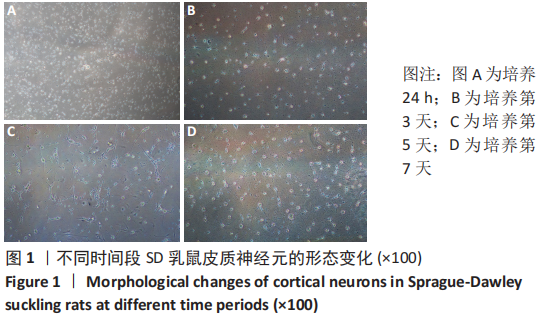
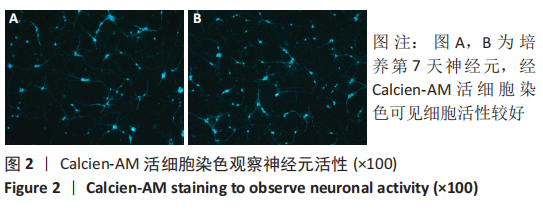
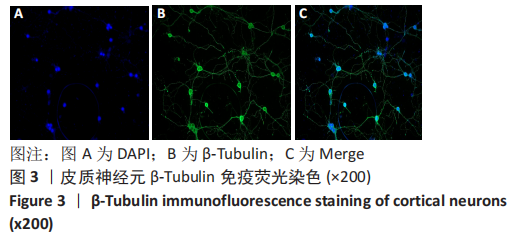
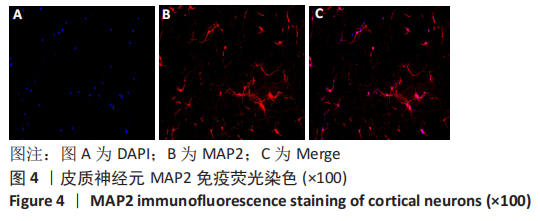
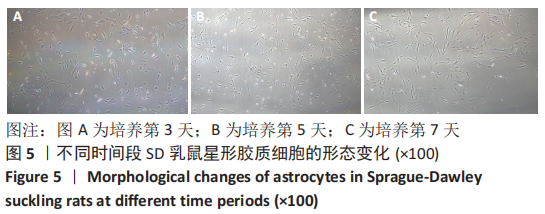
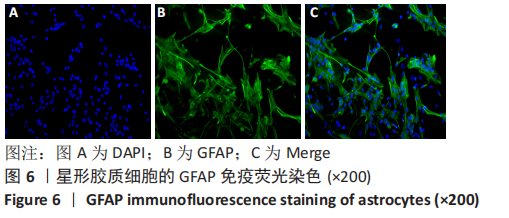
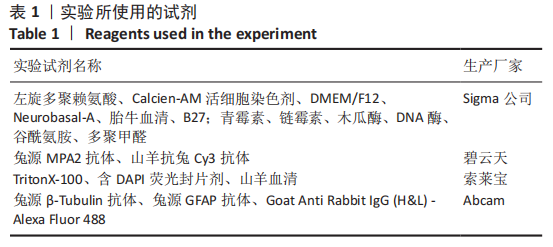
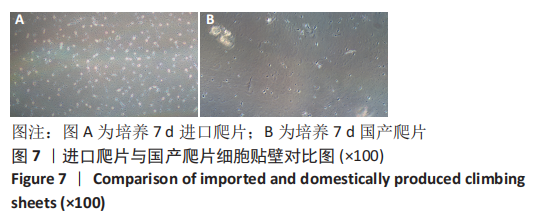 3.4 皮质神经元的提取及培养 神经元能否成功提取的关键之一在于能够充分掌握大脑的解剖结构。此外,要确保使用的是出生24 h以内的新生乳鼠,此时段乳鼠的脑膜容易剥除及血管较少[16-17]。在暴露新生乳鼠大脑皮质后,用眼科镊沿大脑皮质边缘将脑膜及血管完全剥除,此过程注意手法轻柔及保护大脑的完整性。脑膜及血管剔除干净可减少杂质的产生,提高神经元的纯度[18]。大脑皮质取材2.0-3.0 mm厚的皮质组织,过厚容易取到胶质细胞将影响细胞纯度。在常规分离皮质时使用的是普通D-Hank’s液。有研究表明,神经元在低温时也会进行很大程度的代谢,因此该实验在分离皮质神经元时使用高糖DMEM培养液可为神经元提供能量,提高神经元的活性[19]。在终止消化后,使用分层吹吸法将清亮的液体和组织团块分离开,吸取上清液后用200目的滤筛进行过滤,尽可能去除残余组织,此步骤是获取高纯度神经元的关键。在吹吸过程中速度一定要缓慢,动作轻柔[20],不能将组织块吸到枪头内,当组织块被打散后会影响神经元的纯度。种植神经元时浓度过高容易引起神经元因营养不足而出现聚团及死亡,过低则不能满足实验对神经元数量的需求。通过多次验证,种植细胞浓度为1×109 L-1的神经元长势好。切记使用8字法将细胞均匀铺在孔板中,可防止因分布不均匀而影响神经元的生长。
3.4 皮质神经元的提取及培养 神经元能否成功提取的关键之一在于能够充分掌握大脑的解剖结构。此外,要确保使用的是出生24 h以内的新生乳鼠,此时段乳鼠的脑膜容易剥除及血管较少[16-17]。在暴露新生乳鼠大脑皮质后,用眼科镊沿大脑皮质边缘将脑膜及血管完全剥除,此过程注意手法轻柔及保护大脑的完整性。脑膜及血管剔除干净可减少杂质的产生,提高神经元的纯度[18]。大脑皮质取材2.0-3.0 mm厚的皮质组织,过厚容易取到胶质细胞将影响细胞纯度。在常规分离皮质时使用的是普通D-Hank’s液。有研究表明,神经元在低温时也会进行很大程度的代谢,因此该实验在分离皮质神经元时使用高糖DMEM培养液可为神经元提供能量,提高神经元的活性[19]。在终止消化后,使用分层吹吸法将清亮的液体和组织团块分离开,吸取上清液后用200目的滤筛进行过滤,尽可能去除残余组织,此步骤是获取高纯度神经元的关键。在吹吸过程中速度一定要缓慢,动作轻柔[20],不能将组织块吸到枪头内,当组织块被打散后会影响神经元的纯度。种植神经元时浓度过高容易引起神经元因营养不足而出现聚团及死亡,过低则不能满足实验对神经元数量的需求。通过多次验证,种植细胞浓度为1×109 L-1的神经元长势好。切记使用8字法将细胞均匀铺在孔板中,可防止因分布不均匀而影响神经元的生长。